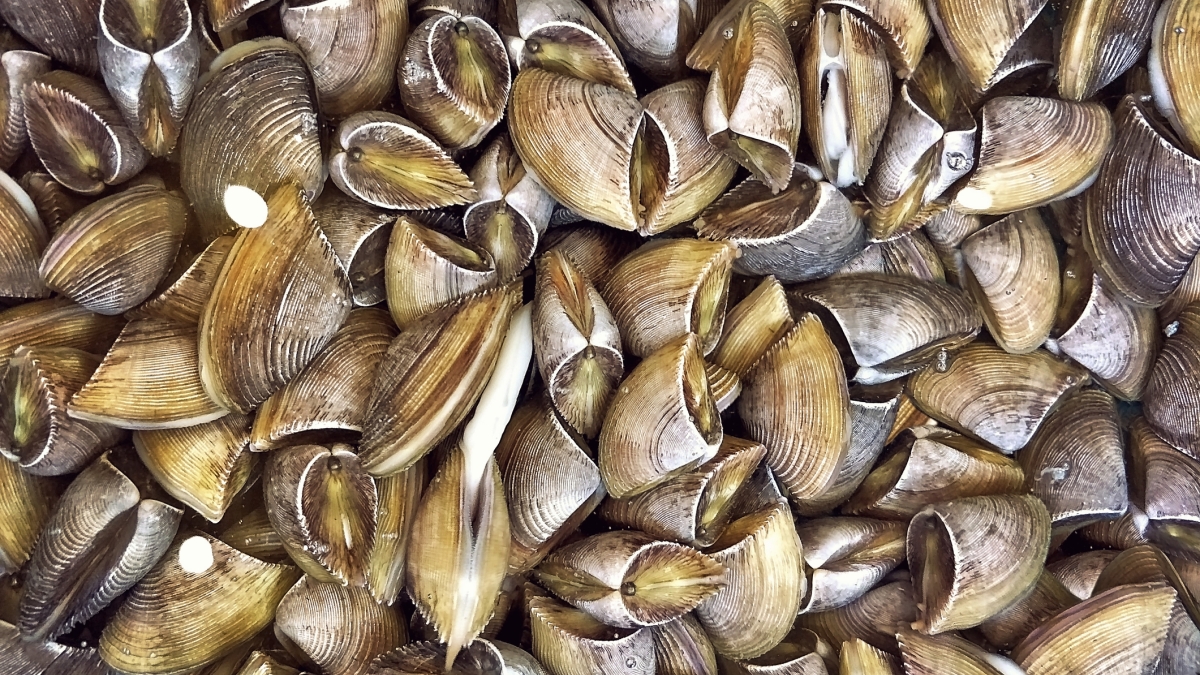The quagga mussel is not something served on a dinner plate or over a large tray of ice at a fancy restaurant. And if you’re a boat owner or work for a municipal water department, you especially don’t want these guys on the menu.
According to the Arizona Game and Fish Department, the invasive species is primed to make a comeback despite years of slowed growth.
The reason?
Quaggas can be spread by watercraft, and recent boat sales data from the National Marine Manufacturers Association shows that sales are robust. More vessels are filling state lakes, rivers, reservoirs and waterways, breathing new life into these prolific invaders: a mature female quagga mussel can produce up to 1 million eggs in a single year.
It might not sound like a big deal, but quagga mussels can cause billions of dollars in damage while disturbing the natural aquatic life food chain.
To get a better handle on these clam-shaped cloggers, ASU Now turned to Kerrie Anne Loyd, a wildlife biologist at Arizona State University at Lake Havasu.
Kerrie Anne Loyd
Question: What is a quagga mussel and how did they get here?
Answer: Quagga mussels are tiny bivalves that feed on plankton and filter up to 1 liter of water a day. They are native to Eastern Europe and were introduced to the United States Great Lakes in the 1980s by ship ballast water. Mussels were detected in the Colorado River (Lake Mead) in 2007 and continued to be accidentally introduced to additional waterways throughout the West by boats. They are prolific and have few predators; they form large and dense colonies very quickly. The larvae are mobile and can easily settle new places.
Q: What is the nuisance they pose to municipalities, boats or water life?
A: Quagga mussels are problematic for municipal water supplies, power plants and irrigation systems because they clog water intakes – they can cover any surface submerged in water where they exist. Communities spend billions every year to keep surfaces clean — scraping, pipe replacement, desiccation — and treat water to prevent spread. I've seen quaggas clogging pipes seven stories underground at the Metropolitan Water District pump plant.
They are not necessarily a problem for boats — unless the boats sit in water for an extended period, for example at a marina.
As far as ecological impacts, on the Lower Colorado River mussels consume significant amounts of plankton, the base of the food chain for our native aquatic life. One of our students found that they selectively feed on everything but a problematic type of plankton here – the toxic cyanobacteria Microcystis. Because they consume so much plankton from our system we have increased water visibility and now you can see much greater depths of water. This is preferable to recreational boaters but allows sunlight to filter further down in the water column and supports excess growth of submerged aquatic vegetation in summer. This means that every July to September we clean and rake large amounts of spiny naiad (aquatic plants) from the lake in high-use recreational areas and by the pump plants where they clog intakes.
Lastly, it is believed that the record-size redear sunfish caught in Lake Havasu may be because sunfish are one of few species that can eat quaggas. One of our students confirmed that the mussels are a significant part of their diet here. There aren’t fish enough to control quagga populations, but this game fish is thriving.
Q: Is this a recent phenomenon in the Lake Havasu area?
A: Lake Havasu and the rest of the Lower Colorado River have been dealing with the impacts of this invasion for at least 10 years.
Q: What separates quaggas from boats and other surfaces, and what else is being done to treat them?
A: Vessels can be decontaminated by drying (desiccating the mussels and any water that might have larvae) or cleaning with hot, high-pressure water. This prevents introduction into new lakes and rivers by boats that have been in water with mussels. Watercraft are examined at state agriculture inspection stations and by park rangers — and I’ve seen quagga-sniffing dogs! — at boat launch ramps of clean waters.
There are labs in Nevada working on treatments and control for quagga mussels. Thus far, research shows that the mussels do not tolerate heat, chlorine, copper and “Zequanox” — made from dead cells of toxic bacteria they try to filter feed. In 2018, mussels were successfully eradicated from a small lake in Pennsylvania using a new molluscicide that did not appear to have negative effects on other aquatic life. There may be some special paints or adhesives in the future that could prevent mussels from attaching to boats and other surfaces.
Arizona Game and Fish has a widespread public education campaign to help prevent spread through proper cleaning after visiting a waterway like Lake Havasu. Further invasions can be avoided with diligent checking of watercraft entering uncontaminated waters.
Photo courtesy of iStock/Getty Images
More Science and technology

ASU water polo player defends the goal — and our data
Marie Rudasics is the last line of defense.Six players advance across the pool with a single objective in mind: making sure that yellow hydrogrip ball finds its way into the net. Rudasics, goalkeeper…

Diagnosing data corruption
You are in your doctor’s office for your annual physical and you notice the change. This year, your doctor no longer has your health history in five-inch stack of paperwork fastened together with…
Large-scale study reveals true impact of ASU VR lab on science education
Students at Arizona State University love the Dreamscape Learn virtual reality biology experiences, and the intense engagement it creates is leading to higher grades and more persistence for biology…



